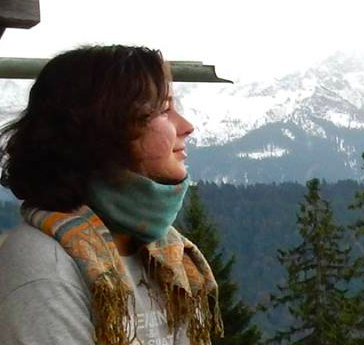 |
| A still from Bee Movie (2007), directed by Simon J. Smith and Steven Hickner |
‘According to all known laws of aviation, there is no way a bee should be able to fly. Its wings are too small to get its fat little body off the ground. The bee, of course, flies anyway because bees don’t care what humans think is impossible.’ You might recognise these words as the opening from the animated film Bee Movie (2007). The film is as known for its memes as its compulsive heteronormativity. If you are unaware: not only are there many happy nuclear bee families, the star of the film, Barry, is a male worker bee. On top of that, the human woman with whom Barry takes on the honey industry and fights for equal bee rights appears to develop some warm feelings for him. Needless to say, Bee Movie is fun but not a cinematographic masterpiece.
Jokes aside, the 2007 film is a good indicator of an influx of documentaries, memoirs, novels, and poetry collections starring the Western or European honeybee. Perhaps I’m being too critical here. This influx does excite me in a way, as it shows that insect life and decline has become part of a broader conversation. But, with this awareness of insect decline in our cultural imagination comes a sting in the tale. In this case, the sting is an almost obsessive focus on the European honeybee in an age of overall insect decline and what Elizabeth Kolbert (2014) popularised as the sixth extinction. There are thousands of known species of bees all over the world—not to mention other bugs—and yet a select group of people continue to talk, write, film, draw and campaign for the European honeybee. (Are you familiar with the concept of bee-washing?)
In response to these stories, I started thinking about the following: why is there so much creative work on the honeybee? Insects make up the most biodiverse and largest class of described (and estimated) species in the animal kingdom. And while many of these—not all—are indeed facing decline or even extinction, the European honeybee is not one of them.
What started out as a general interest, quickly evolved—metamorphosed!—into my doctoral project on insect decline. Inspired by Ursula Heise’s (2016) work on the cultural side of extinction, I started asking the following: what kind of narratives do people create when talking about insect decline, and how do they tie in with other and older insect stories, our broader cultural memory? Is there an explanation to be found for this honeybee hyperfocus when it comes to narratives of insect decline? Thinking about these questions, I kept returning to Donna Haraway, who wrote that ‘it matters what stories we tell to tell other stories with … It matters what stories make worlds, what worlds make stories.’ (12) Haraway’s keen (if not overcited) observation also applies to the case of insect decline. When looking at creative storytelling—of which there is a lot—we’re not just considering entertainment or aesthetics. Even with something as seemingly banal as Bee Movie, it does matter what stories we tell to tell the story of insect decline. So why do people contribute to this, for lack of a better word, honeybee extravaganza?
 |
| An assortment of contemporary honeybee stories |
 |
| Assorted Coleoptera in the University of Texas Insect Collection |
- Haraway, Donna J. Staying with the Trouble: Making Kin in the Chthulucene. Duke UP, 2016.
- —. When Species Meet. U of Minneapolis P, 2008.
- Heise, Ursula K. Imagining Extinctions: The Cultural Meanings of Endangered Species. U of Chicago P, 2016.
- Jørgensen, Dolly. Recovering Lost Species in the Modern Age: Histories of Longing and Belonging. MIT Press, 2019.
- Kolbert, Elizabeth. The Sixth Extinction: An Unnatural History. Bloomsbury, 2014.
- Puig de la Bellacasa, María. Matters of Care: Speculative Ethics in More Than Human Worlds. U of Minnesota P, 2017. Salazar Parreñas, Juno. Decolonizing Extinction: The Work of Care in Orangutan Rehabilitation. Duke UP, 2018
—————————–
This blog is written by Cabot Institute member Eline D. Tabak, PhD researcher in English (University of Bristol) and Environmental Humanities (BSU). This blog outlines her SWW DTP-funded project. You can follow Eline on twitter @elinetabak and see more of her writing and work at www.elinedtabak.com. This blog was reposted with kind permission from the Centre for Environmental Humanities. View the original blog.
 |
| Eline D. Tabak |
